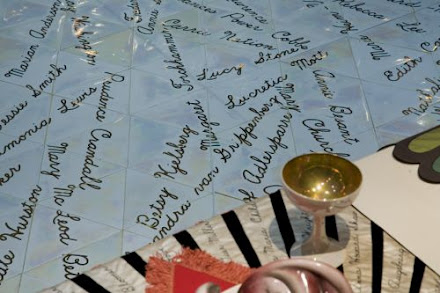28 June 2022
June 7, 1916: Charles Burchfield And A Hot Day In Ohio
21 June 2022
Paula Rego: The Dance
Paula Rego was born in Lisbon, Portugal in 1935, an only child in a privileged family. At the time the country was ruled by the fascist dictator Antonio Salazar. His regime was hostile to women, a Latin version of kinder, kuche, kurche, So, although Paula's mother began to draw at the age of four there was no chance that she could make a career of art.
In 1951 Rego moved to England to study art at the Slade School under the care of a guardian; her family was quite conservative although strongly anti-fascist. Her father commissioned her to create murals for a workers' canteen in 1952 but it was a decade later before she began to exhibit her work in group shows in London.
The British Royal Academy has described Rego as "one of Europe's most influential contemporary figurative artists." In 2010 she was made a Dame by Queen Elizabeth for her contributions to the arts. Indeed the British were so fond of Rego that they routinely referred to her as a Portuguese-born British artist.
Rego died on June 8, 2022. Her granddaughter Grace Smart, a theatre designer, tweeted : "Paula Rego was a fantastic and world changing artist, and grandma. She taught us how to sew, draw, put on eyeliner, and tell uncomfortable stories." That last may be what the late critic Robert Hughes was referring to when he remarked that if there were two or more people in a Rego painting something bad would happen to one of them.
Image: Paula Rego - The Dance, acrylic on paper mounted on canvas, Tate Museum, London.
14 June 2022
Winslow Homer: Summer Night
07 June 2022
Judy Chicago: Rediscovering Praxilla of Sikyon
"Most lovely of the things I have loved and lost; the sunlight,
"next, bright stars, the moon,
ripe gourds, the fruit of apple trees, the pears."
- Praxilla, circa 441 BCE
Anyone who has read about ancient Greece has probably heard of Sappho of Lesbos. Born around 630 BCE, Sappho lived for approximately six decades; her lyric poetry earned her the sobriquet "the Tenth Muse." Higher praise cannot be imagined.
Praxilla was a native of Sikyon, a city-state on the Gulf of Corinth. It wasn't until Judy Chicago's Dinner Party that proper tribute was paid to Praxilla of Sikyon, one of thirty-nine women honored with hew own specially designed place setting at a non-hierarchical triangular table. You can see in this photo some of the 999 women whose names are inscribed in gold on a white tile floor. More than four hundred women participated in the making of The Dinner Party.
Lesser known than Sappho, in her day Praxilla was called "immortal tongued'", in a time and place where women participated in public and religious events. Today her lyric poems survive only in fragments and paraphrases; primarily "table songs" they were meant to be sung after dinner as guests imbibed wine from drinking gourds.
Image: Judy Chicago - Praxilla, (from The Dinner Party), ceramic, textile, porcelain with rainbow and gold luster, 1974-1979, Brooklyn Museum, photo courtesy of the museum.




